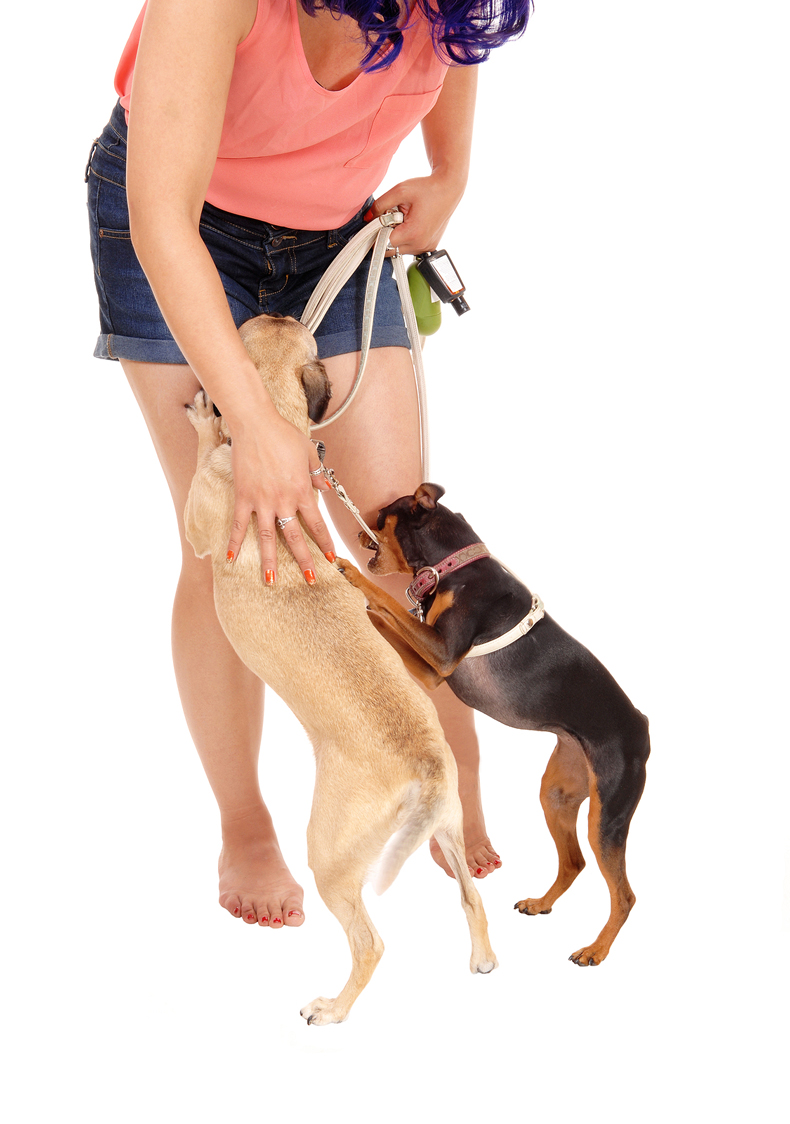I’ve Got a Hump


Although humping is considered a sexual action, it is also a message of power and position. In effect, the dog is asserting its authority. Whatever the motivation, the result is the same: embarrassment for the dog owner, and his/her guest.
Unneutered male dogs are the most likely to engage in this disturbing behavior, but some neutered males and even females may also indulge in it. In fact, one out of three neutered dogs will still engage in humping even after the neutering process. The presence of testosterone is far from the only influence in humping. The behaviour often persists for months after the neutering surgery.
Why Do Dogs Hump?
The first and most obvious reason why dogs hump objects and people is sexual. Especially applicable in unneutered males without a mate, humping can be performed as displaced sexual behaviour akin to masturbation. Neutering may not be immediately effective in curtailing the behaviour, as male dogs may possibly continue to ‘dry hump’ – it takes time for the dog to appreciate that things have changed.
But sexual motivation is not the whole story, as inexperienced neutered males and some females hump as well. Tense or stressful environments could also motivate this behaviour. The conclusion must be that mounting behaviour, ‘humping’, is genetically encoded in both sexes, and may not be activated by not only testosterone, but also other natural forces such as the need to exert dominance.
Dealing With It
Neutering intact males that are not used for breeding will reduce humping in 60 percent of dogs. Some respond more rapidly to neutering, while others take several months to unlearn the behaviour.
More dominant dogs may continue to hump more or less indefinitely following neutering, unless other measures are taken as well. Managing and restraining the dominant dog can also help. The message transmitted to the dog is one of having to work for what it wants and needs. This program catapults owners into a more highly respected leader role, and elevates them to an immune-to-humping status within the family pack.
Your reaction also has a part to play in reducing or eliminating humping behaviour. When your dog comes up to you and starts to mount, get up and walk away from the dog for a brief time-out. Then, ask the dog to sit and praise it, but do not pat it. This ‘cold shoulder’ treatment may take some time to work, and there should be absolutely no petting of the dog until the mounting has stopped. Picking up your dog and putting it on your lap, or making a big deal out of the behaviour, will give it extra attention and usually inflates the situation.
You can also distract it with engaging it in some other totally unrelated activity, such as throwing a ball for it to fetch. If your dog sneaks up on you and starts humping, make a loud noise such as dropping a pot lid, or saying “off” – then asking the dog to sit, which you can reward with praise or a treat.
Humping, while a nuisance for dog owners, is an interesting and biologically appropriate behaviour designed by nature in the interests of procreation, but also signifies power and control.
Although it may seem counterintuitive that females would also be programmed to hump, sexually dimorphic behaviours are always bisexual. In a manner of speaking, males are modified females, each sex possessing the potential for any and all behaviours, including sexual ones. Humping is one of those more-likely-to-be-seen-in-a-male behaviours, along with roaming, aggression to other males, and leg lifting.








